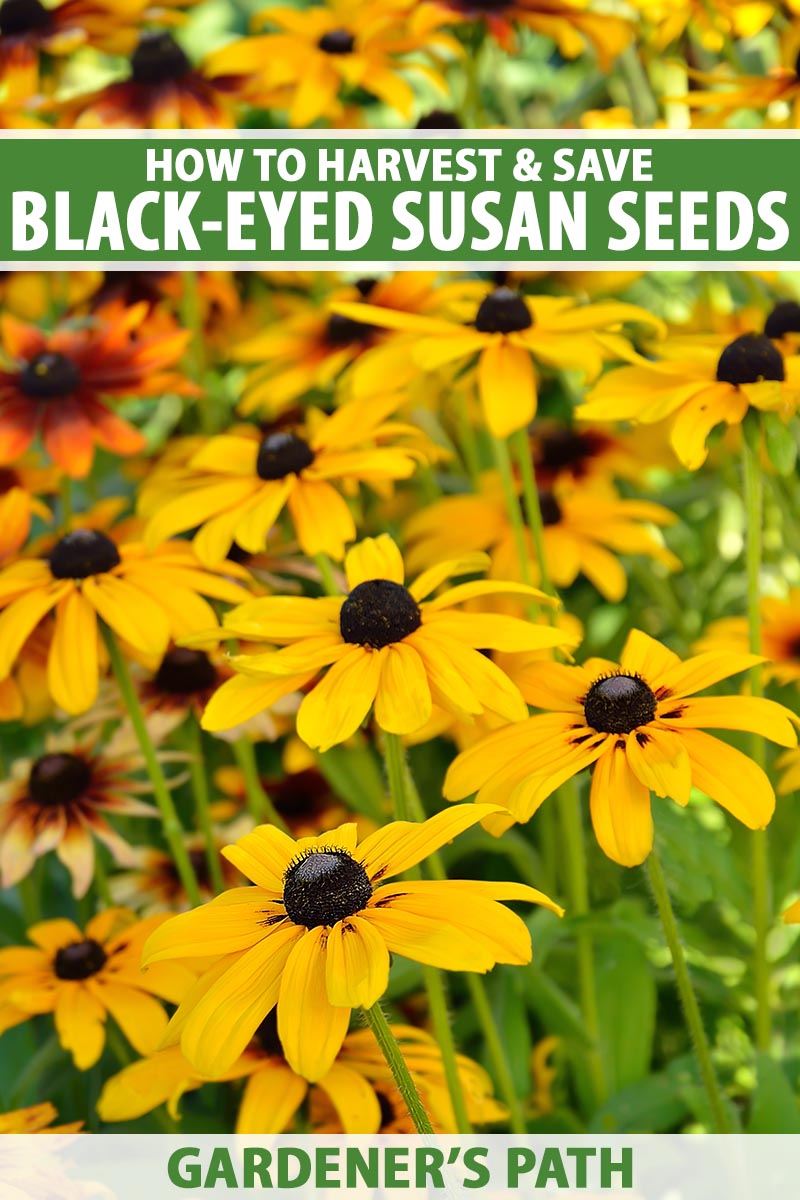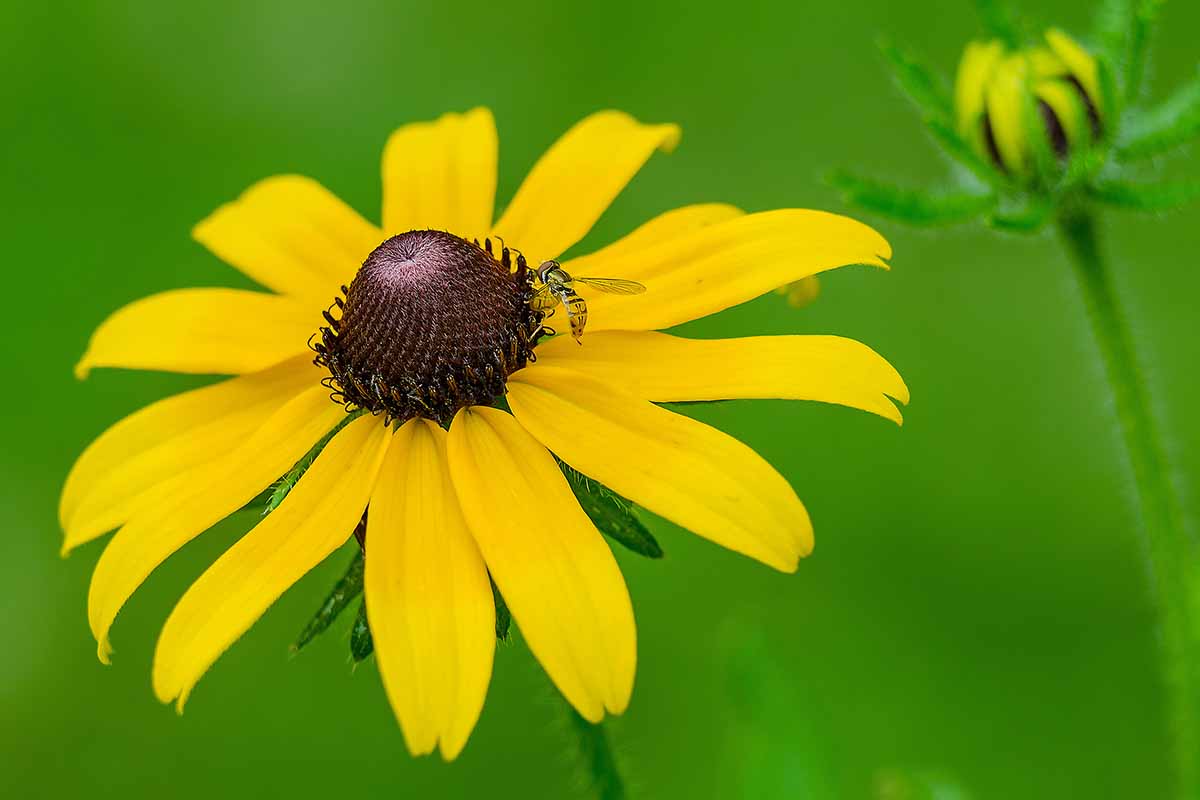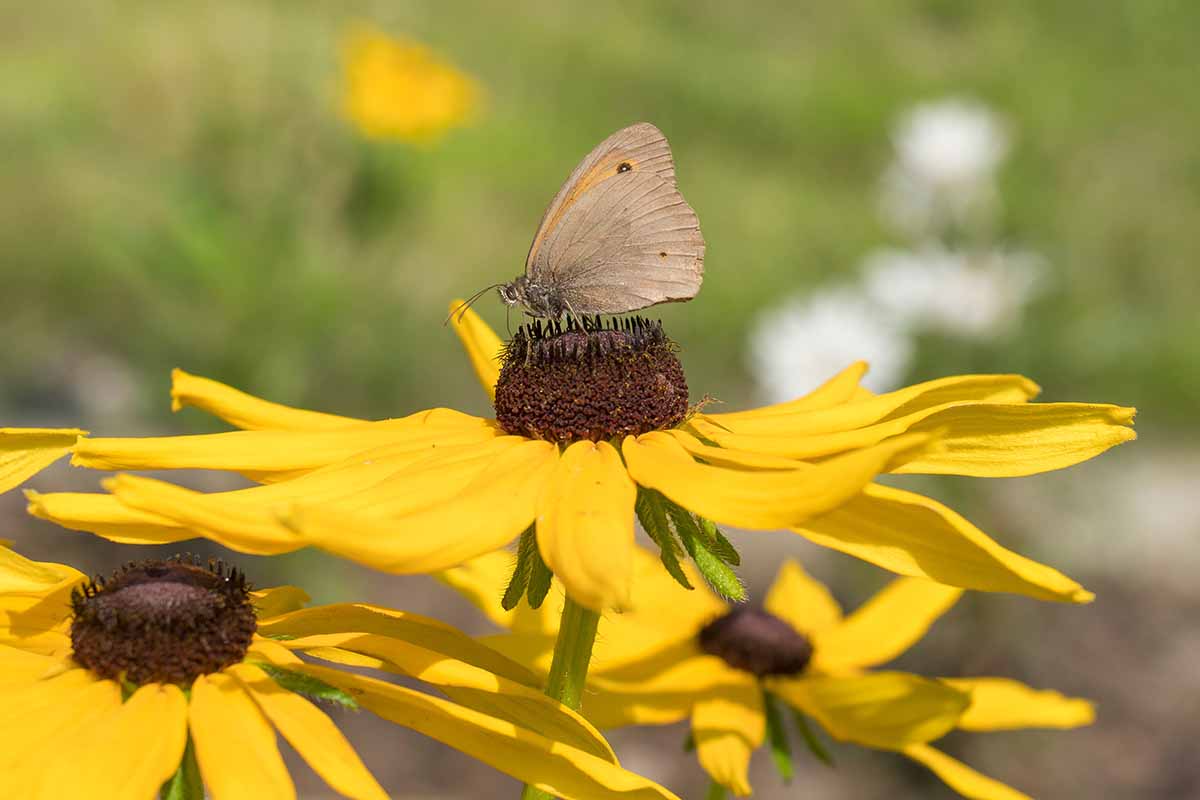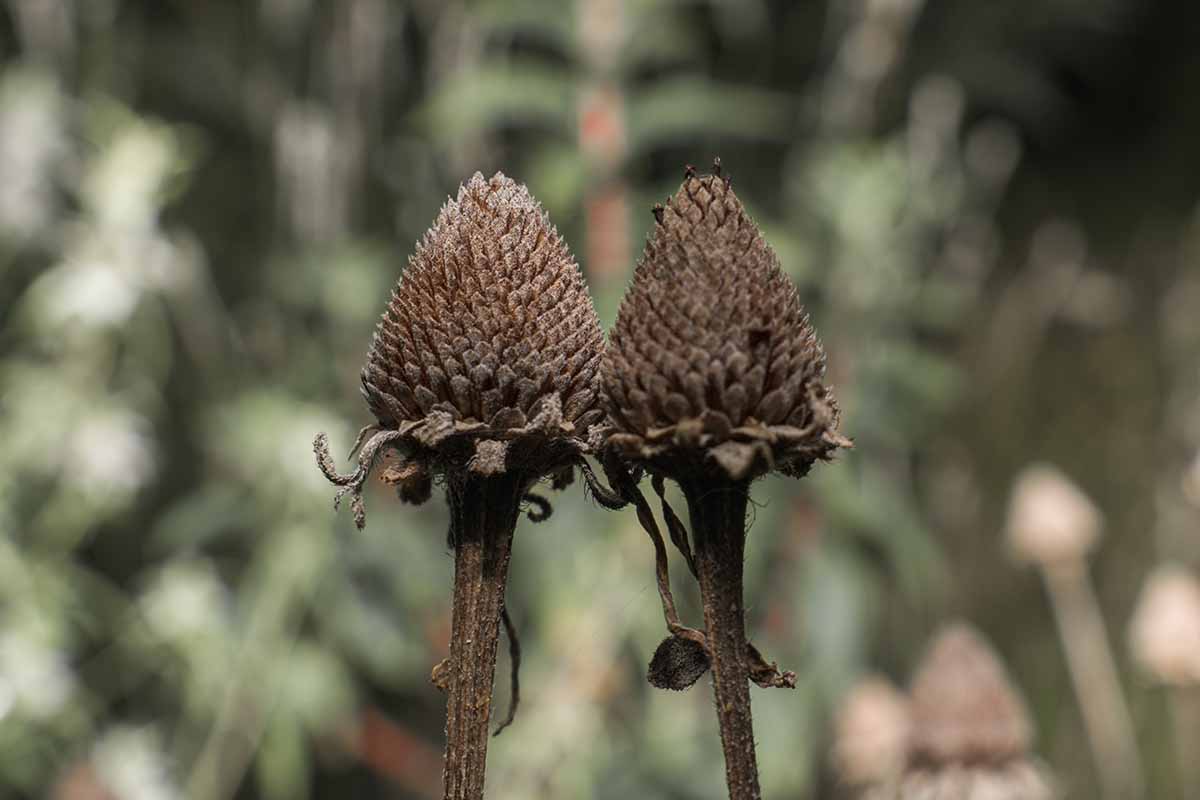How To Collect Black Eyed Susan Seeds
Here are two things I love: wildflowers, and collecting seeds from my garden to relieve for next yr.
Information technology but makes sense to combine the ii into a fun, relaxing, child-friendly, educational activity, correct?
Rudbeckia hirta is one of those wildflowers that's simple to abound, beautiful to have in the garden, and easy to collect from.
So once I have an established patch, I will be visiting information technology regularly to watch the pollinators, revel in the bright blooms, and harvest some hereafter plants independent in a tiny blackness package.

We link to vendors to help you find relevant products. If y'all buy from one of our links, we may earn a commission .
Once you're certain the seeds are mature and set to be collected, information technology doesn't take much to gather a handbag to showtime indoors or sow outside next year. And they're perfect for sharing!
To find out how to decide when to harvest, how to harvest, and all the details on storage, go along on reading! This is what nosotros'll comprehend:
How to Collect and Store Black-Eyed Susan Seeds
- Pollination
- How to Harvest
- How to Store
Pollination
Each black-eyed Susan bloom is actually fabricated up of around 250 to 500 tiny flowers, contained in the brown-black "eye," or center cone, and surrounded past a ring of oversized, bright yellow petals which serve every bit come up-hither beacons for pollinators.

If you look closely, you'll notice that these tiny flowers bloom, producing sun-colored pollen, in rings starting on the outer edges and progressing to the center during the bloom period, eventually creating an elongated cone.
The winged creatures that come to investigate the vibrant, contrasting flowers are treated to a sip of nectar produced past each flower, so you can imagine pollinators dear this wild bloom.

Equally the bees, collywobbles, flies, and wasps potable nectar, they choice upwardly and deposit pollen, fertilizing the tiny flowers.
Thus, you lot don't need to exercise anything to propagate your established plants. The helpful pollinators exercise the work for you!
In fact, if you leave them exist, Rudbeckia volition often sow themselves and come dorsum year subsequently year as if they were perennials, though they are in fact biennials.
If you want to control where they propagate themselves, wish to add together sunny colour to other areas of your garden, or desire to share the cheerful blooms, harvesting and storing the seed can assistance you accomplish that.
How to Harvest
Three to four weeks subsequently a flower has bloomed, the seeds are mature and ready to be harvested.

Black-eyed Susan blooms throughout the flavor, and so you may be able to harvest multiple times through the summer and into fall. Generally, the bulk will be set from mid-September to mid-October.
Double cheque, though, equally the seeds will not continue to develop after you remove them from the constitute.

Mature seeds are charcoal gray to blackness, long, and have fine veins running their length. The cones should be dry.
These heads don't shatter easily, only wind, rain, and hungry birds tin exit yous with little to nothing to harvest very speedily – so keep an eye on them!

In one case mature, you can clip the unabridged caput off with some stem fastened, place the head in a paper bag, and use the stalk to hang information technology upside downward in a warm and dry location to dry fully.
Alternatively, spread the heads on newspaper or in a box in a warm and dry spot to allow them to dry out completely.
You're looking for a crispy, brittle cone. In one case dry out, the cones can be crushed or shaken, or y'all can use your thumb to scrape the seeds free.
You'll exist left with a mix of black seeds and dark-colored chaff. The chaff is comprised of flower remnants and bits of the cone that held everything together.
There are a variety of methods available for removing the crust, including using a sieve or dropping handfuls in forepart of a fan so the breeze blows the crust away. Experiment, and use what works best for you!
How to Store
These seeds will stay viable for iii to five years if you store them properly.
Place the fully dry out seeds in a paper envelope, label it with the species and date nerveless, and seal it in a jar.
Store in a cool, dry out location.
Three months of cold stratification is required before planting in the jump, or y'all can pre-seed the garden to cold stratify outdoors.
Source: https://gardenerspath.com/plants/flowers/harvest-rudbeckia-seed/

0 Response to "How To Collect Black Eyed Susan Seeds"
Post a Comment